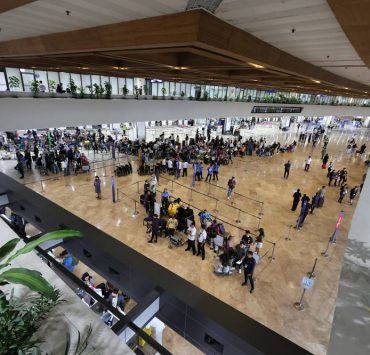Discovering Magellan

Older Filipinos will remember Yoyoy Villame’s song, with a sticky tune and lyrics, poking fun at Ferdinand Magellan. That was in 1972 and Magellan was Villame’s first recording, launching his professional musical career.
I suspect Villame composed the song almost as revenge, getting back at his teachers who forced students to memorize the answer to the question: “When did Magellan discover the Philippines?” Villame included the correct date in his song and I’ve spent my life as a school administrator warning teachers not to ask that silly question.
So, who discovered the Philippines?
We don’t know; we will never know. If it’s the first humans to arrive in the Philippines, so far the evidence from genetic studies suggests it’s people of Negrito stock. If we are to go further back in time, we would have to figure out who ate the rhinoceros whose bones were found in a site in Rizal, Kalinga, with bones showing signs that the animal was butchered. Definitely, they could not have been Homo sapiens because the site is dated 700,000 years BP (before the present).
I’m more concerned about Ferdinand Magellan, who goes back more than 500 years BFM (before FM, the other Ferdinand). We really give this older Ferdinand too much credit, saying he discovered the Philippines. He’s also eulogized as the first person to circumnavigate the world, which isn’t accurate either because he was killed in Mactan before he could complete his voyage.
This Portuguese explorer/adventurer had a short but colorful life—he was 41 when killed. Long before his voyage to the Philippines, he was part of a large Portuguese expedition that set out from Europe in 1505 to install a Portuguese colonial government in India, and to look into possibly expanding to what is Malaysia and Indonesia today. Magellan spent eight years there, returned to Europe, tried but failed to get the Portuguese king to support him in finding another route, this time westward, from Europe to the “Spice Islands,” now Indonesia.
But Magellan apparently had personality problems, falling out of favor with the Portuguese court and moving on to the Spanish king, who did approve an expedition of five ships and a 270-person crew. They took a southwest route into South America but trouble emerged early, leading one entire ship to mutiny and to abandon him. He pushed on, making his way through a narrow strait that brought him to the Pacific Ocean, to Guam, and eventually to the Philippines, first Samar then Cebu and Mactan. There are more stories of his maltreatment of his crew, including executing two sailors who were accused of being homosexual lovers, as well as enslaving and murdering native populations encountered along the way.
The long voyage took its toll, killing large numbers of Magellan’s crew, mainly from scurvy (vitamin C deficiency), but Magellan survived with his private supply of a fruit called quince.
In Cebu, he met Rajah Kulambo and Rajah Siawi from Butuan and Surigao, cousins of Rajah Humabon, who had allied with Magellan. The rajahs were using the balangay, impressive seacraft that was as long as 24 meters (84 feet). The rajahs invited Magellan and crew members to board their balangay where, on Good Friday of 1521, they were wined and dined and stayed overnight. They later had a blood compact with Magellan, a popular theme for paintings.
Hostilities broke out in April with Lapulapu, a rival rajah opposed to Humabon, and Magellan was killed, not in hand-to-hand combat as is often depicted in paintings but by a poison arrow. Humabon abandoned Magellan’s crew. A new captain, Juan Sebastian Elcano, decided they should just sail back to Spain. Of the original 270 sailors and five ships that left Spain in 1521, only 18 sailors returned in 1522.
Spain did not attempt to colonize the Philippines until 44 years later, with the arrival of Miguel Lopez de Legazpi.
Magellan is remembered today through the Strait of Magellan connecting the Atlantic and Pacific oceans, and an American spacecraft and craters on the moon and the planet Venus. In the Southern Hemisphere on clear nights, you will find two dwarf galaxies which have been named the Large Magellanic and the Small Magellanic Clouds. Astronomers recently discovered that the small magellanic cloud may actually be two, and a Filipino-American astronomer, Mia de los Reyes, is using this discovery to organize a campaign for new names and expunge Magellan because of his not so exemplary life. (Go to space.com and look for “The Magellanic Clouds must be renamed, astronomers say.”)
I think Magellan’s life story should continue to be told, more factually. It’s the stuff, too, for telenovelas, several seasons even, entertaining and educational; certainly, he would make a good case study for hubris and bad leadership.
mtan@inquirer.com.ph





















